Easter week in Italy is one of the most important moments not only who is religious. The Whole of Italy, from North to South, is rich in ancient Easter traditions that have been handed down for centuries, from generation to generation.
Somewhere between religious worship and the purest folklore, the celebrations of Holy Week, the one preceding Easter Sunday, are an experience to be experienced and better known.
Suggestive, mysterious and moving: in this article, we'll introduce you to 15 of the most authentic and unmissable Easter traditions in Italy.

Easter traditions in Italy
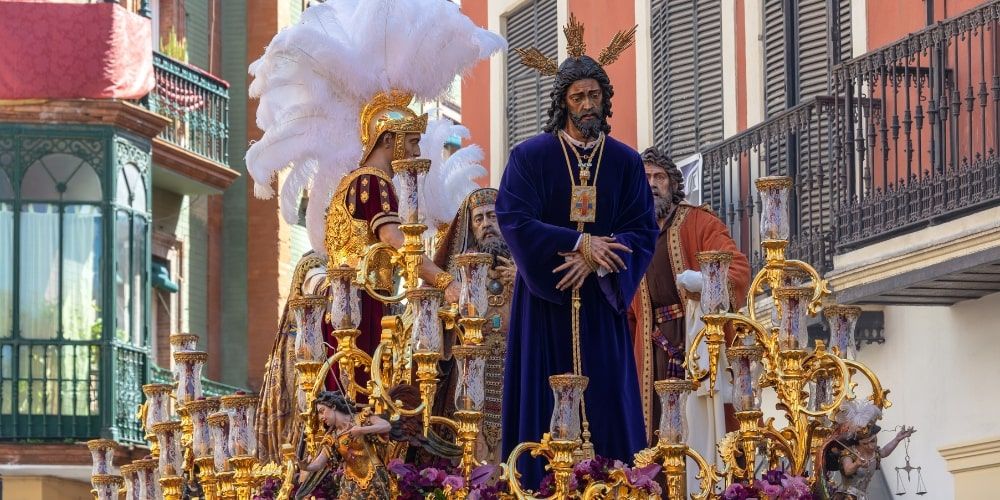
Would you like to know which Easter traditions in Italy are the most compelling, evocative, characteristic, and emotionally impactful?
The engaging processions and folklore re-enactments linked to this solemn Catholic feast day are rich in multiple symbologies. If you decide to organise a trip during this period, the Visit Italy editorial staff has selected some of the best events not to be missed.
Our overview will guide you through some of the most fascinating Easter traditions in Italy and the most spectacular devotional rituals.
15. In Liguria, Easter is synonym to an amazing evening Procession (Liguria)
In Savona, the beautiful Ligurian city overlooking the sea, only in even years, Holy Friday is the occasion to organize a great religious procession that has more than 800 years of history. In fact, around the year 1200, to celebrate Holy Friday, the Brotherhoods of the city used to organize some spectacular events which were more entertaining than religious.
It was not until the Seventeen century that it was decided to organize a more religious procession, enriching the event with wooden sculptural groups. The most famous one is "Ecce Home", realized by the artist Renata Cuneo in the during the seventies. More than 2 meters tall, the statue shows Jesus in the center, wearing a purple robe like a royal cape. "Ecce Home" is the eighth out of fifteen sculptural groups carried on the shoulders across the streets of Savona.
Will the Easter traditions change while we are moving towards the center of Italy?
14. Easter traditions in Vercelli: sculptural groups going in procession (Piedmont)
Around the Seventeen and Eighteen centuries the traditions of the "Processione delle Macchine" began to take place in Vercelli, Piedmont. In Italian "Macchine" literally means something like "machineries" or "cars", but in this case the term has nothing to do with it. "Macchine", in fact, are wooden sculptural groups. They are usually preserved inside the churches of the brotherhoods in Vercelli, but during Holy Friday, they are carried in procession.
Just the light of the torches illuminate the beautiful scene, while all around the members of the brotherhoods advance dressed in traditional costumes. After the sculptural groups, the Archbishop follows, carrying the relic of the Holy Cross, and then the people. In the dialect of Piedmont they are called "the company of the shoves" ("la compagnia d’j arbuton"), for the many shoves that people push against each other to get the best view.
13. In Romagnano Sesia, Jerusalem comes to life every 2 years at Easter (Piedmont)
Speaking of Italian Easter traditions, we are taking you to ancient Jerusalem, instead. The Holy Friday procession is held in Romagnano Sesia, province of Novara, only in odd years. It's a 4 days celebration, during which more than 300 actors and extras perform the Via Crucis. You'll see Legionnaires riding horses, and Veliti, the light-armed troops, following on foot: 14 scenes take place on the street of the little village which found itself living a new, ancient life during the Holy Week.
And what happens to Romagnano Sesia in even years? People do not perform Holy Week, but Epiphany, on January 6th. If you think that this is the most incredible Easter tradition one can see in Piedmont, you certainly should continue reading.
12. Suggestive Easter traditions in Val d'Orcia (Tuscany)
The wonders of Orcia Valley (Val d'Orcia in Italian), in the hinterland of Siena, are renowned all over the world. However, there is a small village, Radicofani, whose Easter traditions are mostly unknown. In the last years, fascinated journalists and bloggers have begun to write about its splendor, because this small Tuscan village organizes something truly unforgettable. It all begins during the Holy Thursday, when a Mass recalls the Last Supper and the Sepulchre opening. Candles, lights and candelabras are prepared, but also the attire and the symbolic food, like bread and biscuits (made without eggs). After the Mass and the Washing of the Feet, the Procession of Penitence takes place: it's opened by people walking barefoot and carrying a big cross and two lights, then the people whose feet were previously washed (representing the Apostles) and finally the people of Radicofani follow. The procession ends silently, waiting for the next day.
On Holy Friday, at 1 PM, "The Three Hours Agony" begins inside the Church of Sant'Agata. Next to the altar, masterpiece of Andrea della Robbia, some branches of boxwood, representing the Calvary, are lit by hundreds of small lights (in the past they were oil candles). In the evening, at 9.30 PM, it's time for the great "Dark Procession" (in italian "Processione Buia". Barefoot people carrying a big cross start the procession, followed by 24 hooded people, 12 members of the Brotherhood of Sant'Agata (in red), and 12 members of the Brotherhood of Misericordia (in white). Then members of other religious communities, the band, the parish and the people follow. The procession ends inside the Church of Sant'Agata, in front of the beautiful altar and the Calvary.
Would you like to undertake a marvelous tour to discover the picturesque postcard sceneries of the Val d'Orcia, the evocative views and masterpieces of Montepulciano and Pienza? Take advantage of the ticket that Visit Italy has prepared for you.
Visit Orcia Valley, Montepulciano and Pienza with a guided tour11. In the center of Italy, the Easter tradition of the hooded people of Chieti
It seems that the procession of Chieti dates back to 842 A.D.. The procession is so important to the people of Chieti, that it was never cancelled, nor for bad weather, nor for other reasons. It was performed also in 1944 when the Nazi prohibited it, and also in 2020, in a greatly reduced dimension, when, because of the pandemic, the only ones to participate were the Archbishop and two prelates.
It takes place in the evening, just after the Mass inside the Cathedral of San Giustino. The heartbreaking Miserere, composed by Saverio Selecchy in 1740, is intoned by 140 choristers and 200 musicians, giving substance to the solemnity of the moment. Hundreds of people wait patiently outside the Cathedral for the procession to start. After sunset, it's time to begin.
The procession is opened by members of Confraternities, hooded by white robes, except for the Confraternity of Misericordia, in black, and the Confraternity of the Belt, dressed with a black robe. Soon after come religious authorities, the Archbishop, and members of the Archconfraternity of the Sacro Monte dei Morti, all dressed with a black robe, a short yellow cloak and a black hood.
Then, it's time for musicians and singers and all the people carrying the symbols of the Passion of Christ. Here they are called "Trofei", which means "trophy", and they are masterpieces realized decades ago, in the XIX century. There are wooden statues, sculptures, objects, and a big cross, raw and really heavy. This is the true heart of the procession of Chieti, followed by all people.
Enchanted by the beauty of Easter in Chieti, will we be able now to proceed and discover Easter traditions of Southern Italy?
10. The solemn Easter rites of Calitri (Campania)
If you reach the splendid castle town of Calitri during the Easter period, you will attend the traditional and evocative Holy Friday or Mystery procession. Exploring this gem, located in the province of Avellino, rich in history, art, culture, and a treasure trove of magnificent masterpieces, you will be fascinated by the solemn atmosphere.
During this commemoration, the penitents belonging to the confraternity of the Immaculate Conception parade, hooded, with their heads encircled by a crown of thorns and dressed in a white tunic. The origins of this fascinating ritual are very ancient since they date back to the First Crusade. The unfolding of this event is accompanied by the slow cadence of the figures and by the mystical rolling of drums and centuries-old dirges, which add to the mysticism of the event.
9. The White and the Black Processions celebrate Easter in Sorrento (Campania)
Sorrento, and its beautiful peninsula, it's one of the place in Italy where Easter traditions are most alive. So old and suggestive, these traditions are made to move one's heart, whether it belongs to a curious tourist, or to a person living in Sorrento. In fact, from father to son, these traditions, with all their secrets, are transmitted and evoked, year after year, with the same emotion. The night between Thursday and Friday is time for the "White Procession": around 3 AM, hundreds of people, wearing a white robe with a black belt, and the face covered by a white hood, proceed across the streets of Sorrento, evoking the sorrow of the Virgin Mary, searching for her son, betrayed and condemned to the cross. They are the "Belted People" ("Cinturiati" in italian), members of the Venerable Archconfraternity of Santa Monica.
On Friday evening, around 9 PM, it's time for another unmissable event, the "Black Procession", dedicated to Christ, dead on the cross. The hooded people wear a black robe, covering also their face, and they belong to the Venerable Archconfraternity of Death. Litanies and funeral marches are performed during both processions. Dozens of singers intone songs and psalms, asking for forgiveness. These two processions share an ancient origin, but it seems that the solemn splendor we see today was influenced by Spanish domination. Moments so touching that can not leave anyone's heart indifferent. In Campania, however, these processions are just one of the most extraordinary Easter traditions to be performed in Italy.
Do you dream of exploring Sorrento and Amalfi, magnificent gems nestled in the enchanting Amalfi Coast, rich in art, culture, and nature? Benefit from the Visit Italy ticket.
Discover Sorrento and Amalfi with a wonderful trip8. Easter Mystery bring to life in Procida (Campania)
The Procession of the Mysteries is one of the most ancient traditions of Campania dates back to Seventeen century. The new incredible setting is the island of Procida where, for more than 400 years, on Holy Friday dawn people are awakened by the sound of the trumpets.
This procession is unique in its kind. In Procida, in fact, the floats used during the procession are made by the people of Procida themselves. They start to work at them at the end of Carnival, working days and nights to create something unique, representing the different stages of the Passion of Christ. It's a serious commitment that the people of Procida take, not only speaking about time, but also money. The efforts of this great work are shown inside the Church of San Giacomo for 40 days, after the Mystery Processions on Holy Friday.
It starts in the morning, around 8 AM. The procession has its peak when the statues of Mary of Sorrows and the Dead Christs are carried on shoulders to the Church of San Tommaso. The statue of Christ is a wooden masterpiece made by Carmine Lantriceni in the seventeen century. It all ends by Marina Grande harbor, where the statues are left inside the Abbey of San Michele. And at the end the day, what's better than a torchlight procession to bring the statues back to the Church of San Tommaso? An unmissable occasion to finally visit the beautiful Capital of Culture 2022.
Discover the island of Procida7. The cross-bearers of Noicattaro among the most extraordinary Apulian Easter traditions
Easter traditions in Noicattaro, small village not far from Bari, Apulia, are really scenic. Here, Easter is time for a big event starting from Holy Thursday.
However, it's probably the beginning the most intense event of the celebration, when the cross-bearer people, with a black robe, the face covered and a crown of thorns on the head, walk on their knees through the aisle of the church. After that, they flog their shoulders with an iron chain linked to their feet. Outside the church, a bonfire is started to pray for an abundant harvest. Then, around 9 PM, it's time to start the procession, which is opened by the cross-bearers, and followed by people carrying lights and children playing ratchets: it all evokes the Praetorian Guard that brang Jesus before Pilatus.
Friday is dedicated to the "Procession of the Naka", in other words the sarcophagus, in the shape of a cradle, where the body of Christ is put. Saturday is time for grieving and sorrow: at 2 AM, lit by candlelight, it's time for the Procession of Mary of Sorrow. Cross-bearer people and women, dressed in mourning wear, follow the statue of Mary and kiss its black veil. In the afternoon, the last event before Easter is the "Mystery Procession". Are we ready to discover Easter traditions, among the most beautiful in Italy?
6. A new Jerusalem is on stage in Barile (Basilicata)
In the small village of Barile, in Basilicata, Easter is the perfect occasion to perform an incredible event. People of all ages take part in the procession, providing their knowledge, time or gold jewels, as we will see later.
126 performing people, subdivided into 25 scenes, put on stage the Passion of Christ. Next to characters belonging to the religious tradition, there are also characters that belong to the local folklore. For example, you'll see the Gypsy, a lady that is said to have bought the spikes for the cross. There is also the Moro (Moorish person) and the Moretto (little Moorish person) that, together with the Gypsy embody evil: these three characters, in fact, laugh and show indifference to human suffering. Gold is very important in this event and the Gypsy has the corsage which is full of it: tradition has it that she begins to ask for it to all the families of Barile as soon as Christmas. And on Holy Friday? She laughs and dances, embodying beauty and evil. Here we are ready to leave for Sicily
5. Spanish Tradition Lives Again in Easter in Enna, Sicily
In the city of Enna, Easter is celebrated richly, intensely and it lasts one week, beginning with Palm Sunday. Even here, anyway, the crucial event is the procession held on Holy Friday, so important and unique to be included in the Registry of the Intangible Cultural Heritage of Sicily. More than 2 thousand confreres have their role in the event, and more than 20 thousand people, coming from all over Sicily, attend the event every year.
The confreres are hooded and walk through the city of Enna perfectly silent. The procession is opened by the members of the Confraternity of Passion, who carry with them the 25 symbols of the martyrdom of Jesus: these objects are called "Misteri". After them, all the other Confraternities follow. The procession reaches the cemetery church where the blessing is performed. Then, it's time for the procession to come back to the Dome.
Needless to day, it's a great event that year after year still touches everyone's heart.
4. The Holy Week in Iglesias, in Sardinia
Visiting Iglesias, an enchanting village with a rich historical, cultural, and natural heritage, you will explore its magnificent medieval center, full of religious events of remarkable impact during Holy Week. The centuries-old contaminations stemming from the long Spanish domination characterize the Easter rituals, whose protagonists are the babballottis, hooded and dressed in white, and lend sacredness and marked spirituality to this collective rite.
Among the highlights of the Iglesiente celebration, we mention the Procession of the Mysteries on Holy Tuesday, in which the figurants carry seven plastic representations that reenact the passions of Jesus. Another event on the calendar is the Holy Thursday procession, with the rhythmic and hypnotic melodies of the matraccas and drums, in which babballottis accompany the Madonna Addolorata along the route of the seven city churches to seek Jesus. The baroque-style procession of the Descenso, which takes place on Holy Friday, the Easter procession, and S'Inserru one represent the culmination of the rituals.
3. The Palombella Festival in Orvieto, Umbria
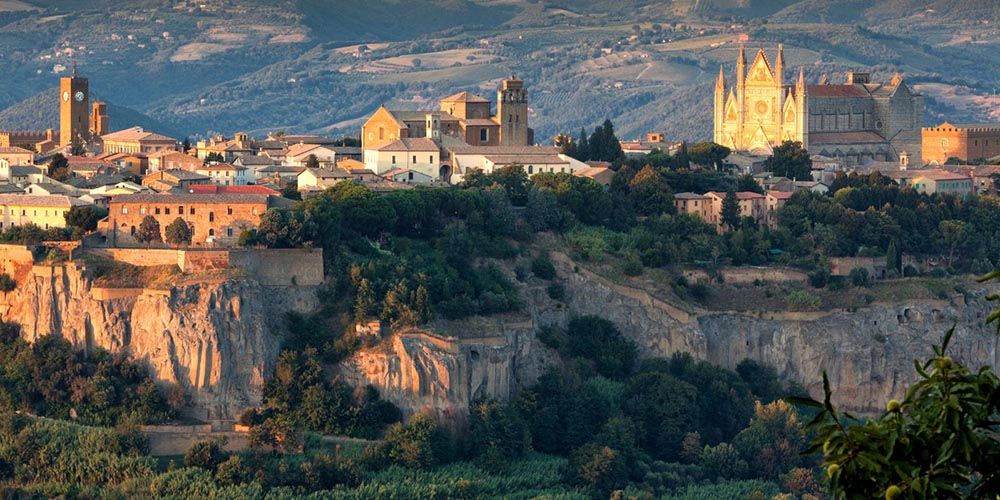
The Palombella Festival is an event that enlivens the splendid Piazza del Duomo in Orvieto in Umbria every year. It is one of the most heartfelt religious events of the year, both for the citizens and the surrounding area, but there are also many tourists and curious people who come to the event. The Palombella Festival is celebrated on the day of Pentecost, the day in which, according to the Catholic religion, the Holy Spirit descended to protect the Blessed Virgin and the Apostles. To represent the Holy Spirit, a white dove (the palombella) descends from the roof of the Cathedral of Orvieto until it reaches the steps of the church, where a tabernacle depicting the apostles and the Madonna is located. When the dove reaches this station, flames of fire are lit.
The journey of the Palombella begins when the Bishop waves a handkerchief from the balcony of the Palazzo dell’Opera del Duomo, woe betide if the Palombella were to stop halfway, usually this celebration leaves all those present with bated breath until the very end. Throughout the day, flag-wavers, musicians and medieval dances in period costume will liven up the streets of the city. The Palombella celebration was established in 1404 by the noble Monaldeschi family and has since then been celebrated every year on the day of Pentecost, an additional opportunity to visit the splendid region of Umbria.
Discover the undergrounds of Orvieto2. The Procession of the Dead Christ in Orte, Lazio
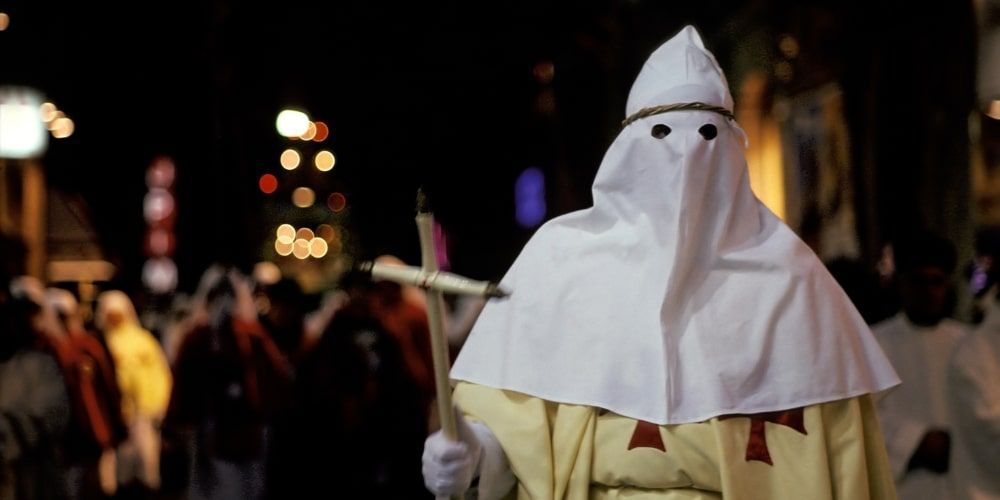
One of the oldest religious events in Italy is celebrated during Holy Week in the small town of Orte, in the province of Viterbo. Here, a historical reenactment of great emotional impact is held. On the evening of Good Friday, the Procession of the Dead Christ is celebrated. The procession starts from the main church of the town, where 14 men, belonging to historic brotherhoods, carry the coffin of the Dead Christ on their shoulders, around them 500 other brothers accompany the procession.
All participants wear the hooded tunics of their brotherhood, some carry large Crosses to symbolize the weight of sins, others are barefoot with heavy chains tied to their feet. The culminating moment of the celebration is when the coffin of the Dead Christ is placed in the center of the square of the small village, all the brothers arrange themselves around it to form a heart, the celebration ends with the ancient rite of bread, in which a broken loaf of bread is distributed among the brothers and citizens to remember the gesture of Jesus during the Last Supper.
1. The Vattienti of Nocera Terinese, Calabria
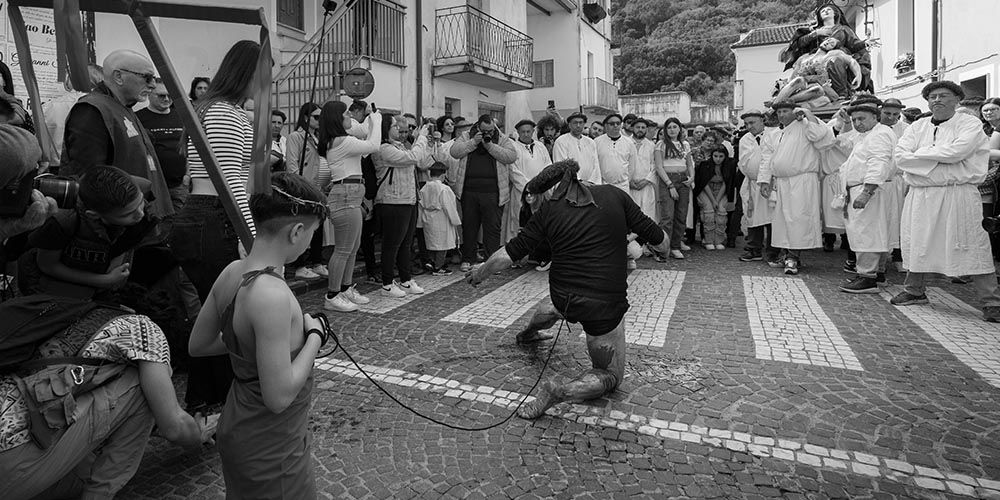
If you are not used to folklore, the Vattienti ritual in Calabria could impress you for the realism with which it is conducted, it is a ceremony with a strong impact that takes place on Good Friday. The Vattienti are the traditional flagellants who accompany Christ, they walk through the streets of the small town of Nocera Terinese beating their legs with penitential instruments. During the procession the Vattienti are followed or welcomed at the door of some homes by people who pour wine on their wounds, to disinfect them.
The ritual ends with the Vattienti who stop at the foot of the wooden statue of the Madonna Addolorata, dating back to 1300. Metaphorically it wants to be an act of symbolic participation in the suffering of Christ, the ritual dates back to the Middle Ages. Here ends our overview of the most authentic and folkloristic Easter traditions to follow in Italy.
About the author
Written on 22/02/2024


.jpg)
.jpg)
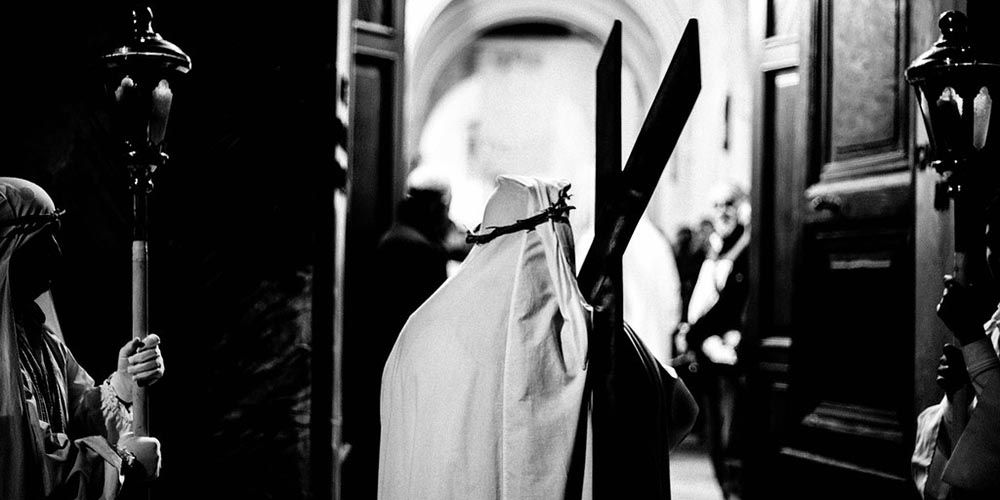
.jpg)
.jpg)
Elisa Borgato
This trip will be an authentic surprise. All different and incredible, Easter traditions in Italy will certainly leave you speechless.